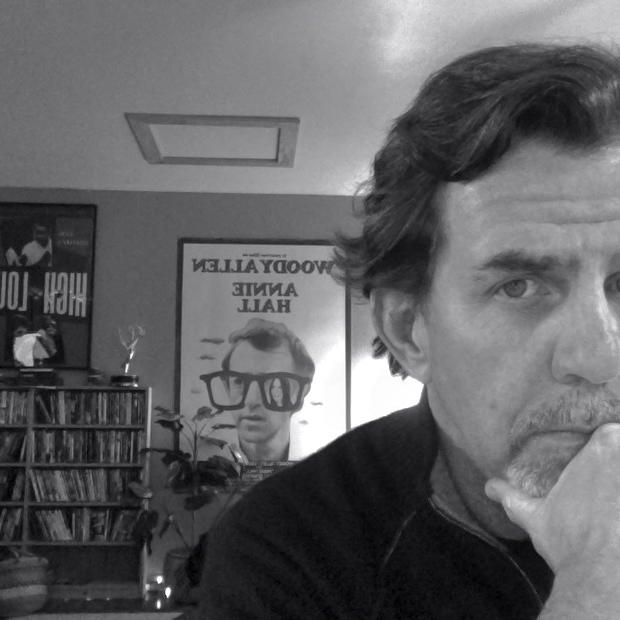
The producers of this Seattle web pilot call it a “comedy series that celebrates the quirky characters and funny situations that arise at a local farmers market.” I don’t know about you, but the characters I’ve encountered at farmers markets tend to be more earnest than quirky, and the “situations” usually involve running out of cash before I make it to the organic hot fudge booth. No matter. Creator and co-writer Simon Hamlin, and producers Lorraine Montez and Lisa Roeser from Seattle-based Abundant Productions, seem determined to squeeze laughs from this turnip. The pilot introduces us to a wacky multigenerational market brood who, if the series takes off, will continually entangle themselves in one comic imbroglio after another. The filmmakers’ goals are admirable, the performers are committed and the technical specs are top-notch, but this "Portlandia"-meets-"Arrested Development"-meets-"Prairie Home Companion" copycat feels like day-old sourdough. If the series expects to earn a place at the crowded table of original online videos, it will need way more spice and much less corn.
A husband and his pregnant wife wait expectantly in her doctor’s office while a nurse administers an ultrasound. The young, attractive, heterosexual couple gaze excitedly at the grainy image of the baby on the screen. “Would you like to know what you’re having?” the nurse asks as she wraps up the procedure. “We would,” says the expectant mom. “You’re having a lesbian.” The couple reacts with warm smiles and a hand squeeze. This PSA, part of a campaign promoting marriage equality from Australia's PFLAG (Parents and Friends of Lesbians and Gay), seeks to garner support for gay marriage from the country’s mainstream families. With the recent demise of Section 3 of DOMA, same-sex marriage is now legal in the U.S, but 29 states still constitutionally prohibit it. Watch this 40-second spot, then try to imagine how a similar PSA, sans the down-under accents, would play in Texas or Kansas or North Dakota.
Seattle-based environmental news website, Grist.org, produced this video designed to get young urban commuters behind a pair of handlebars. The snappy, positive short might encourage high-tech hipsters to train their eyes on a bike lane instead of their ubiquitous devices, but it doesn’t mean they’ll make it to work unscathed. At the recent Bicycle Urbanism Symposium hosted by the UW’s College of Built Environments, Rutgers professor and co-author of City Cycling, John Pucher, lamented the lack of safe, dedicated bike lanes in the city. “There’s so much potential here in Seattle," he said. "And it’s going to be lost because there doesn’t seem to be the political will to implement these things." Then he called downtown’s Second Avenue corridor a death trap.
One of the most-watched comedians on YouTube, Ray William Johnson hosts a show called "Equals Three," a fast, funny, foul-mouthed round-up of viral videos he started while he was a student at New York's Columbia University. "Equals Three" combines the premise of ABC’s "America’s Funniest Home Videos" — the long-running series for shut-ins on dial-up — and the goofball raunch of Comedy Central’s "Tosh 2.0." Johnson produces his show from what looks like the corner of his apartment, its walls papered with glossy pages from supermarket tabloids, and he bounces around the space in a polished blitz of jump cuts, sound effects and blink-of-the-eye graphics. The videos are the work of your typical knuckle-draggers (oafish pranks and stupid stunts) but the show’s considerable appeal is in watching Johnson deconstruct their idiocy with an Uzi-like barrage of verbal spitballs and antic mimicry. His razor-sharp timing makes him an entertaining emcee, even if he is shooting fish at the very bottom of the barrel.
Amsterdam's Rijksmuseum, home to priceless Rembrandts and Vermeers and more than a million historical pieces of art, recently reopened after a 10-year renovation. In a nearby shopping mall, museum-commissioned filmmakers staged an elaborate flashmob dramatically recreating Rembrandt’s famous painting, "The Night Watch," to advertise the reopening. Shot and edited like a European crime thriller, with multiple cameras, hurtling stuntmen and staged parallel action, the sequence is exciting but technically not a “flashmob.” The mall was in on the gag and the shoppers obviously alerted ahead of time. Otherwise, the appearance of men wielding swords and rappeling off banisters would have created panic in this age of terrorism. This is instead called a “smart mob” and, if you want to get cranky about it, the fake spontaneity of these commercially-orchestrated events sort of saps the fun out of the whole idea.

